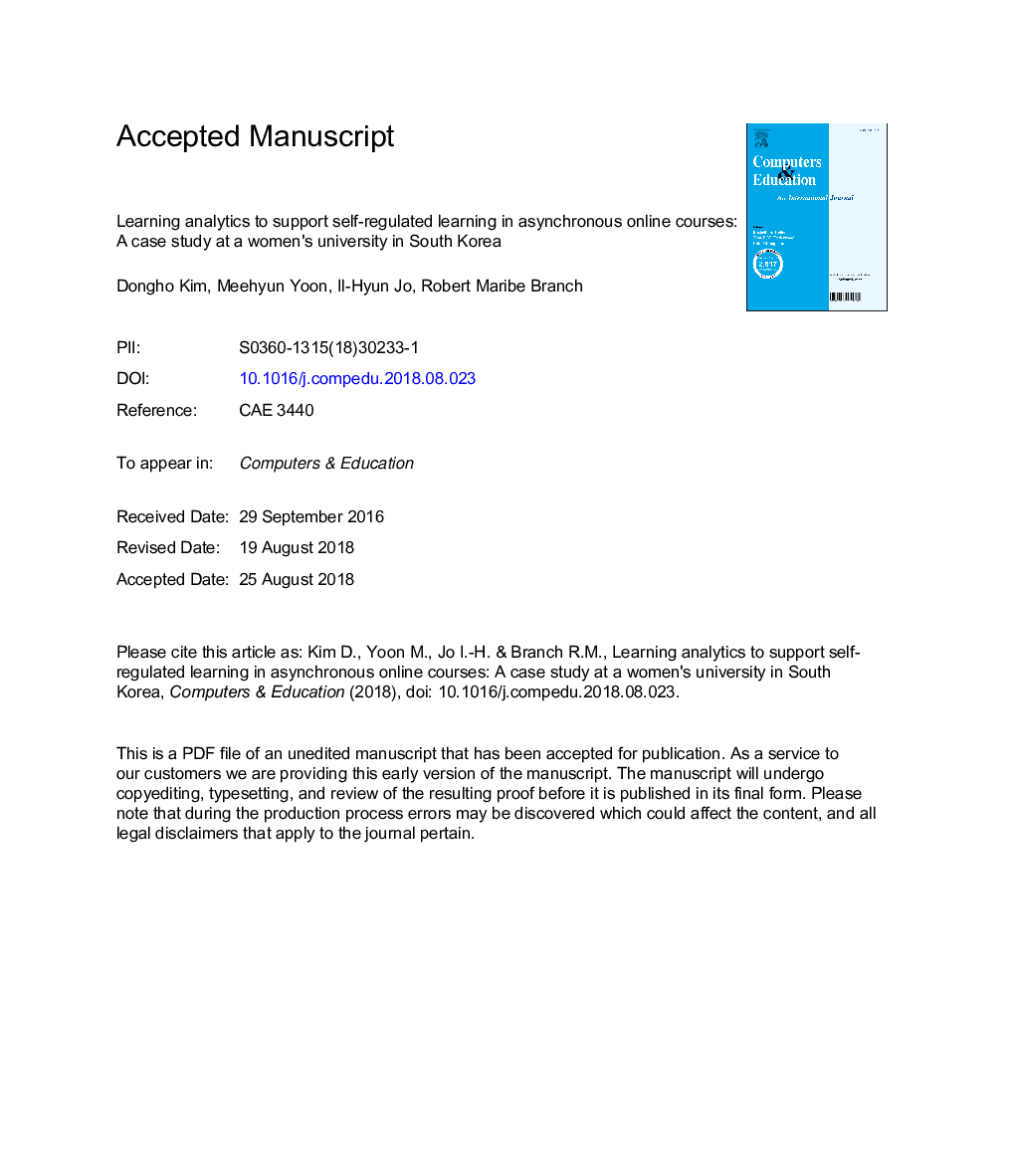| Article ID | Journal | Published Year | Pages | File Type |
|---|---|---|---|---|
| 10127017 | Computers & Education | 2018 | 63 Pages |
Abstract
The k-medoids clustering identified three self-regulated learning profiles: self-regulation, partial self-regulation, and non-self-regulation. Self-regulated students showed more study regularity and help-seeking, than did the other two groups of students. The partially self-regulated students showed high study regularity but inactive help-seeking, while the non-self-regulated students exhibited less study regularity and less frequent help-seeking than the other two groups; their self-reported time management scores were significantly lower. The analysis of each week's log variables using the random forest algorithm revealed that self-regulated students studied course content early before exams and sought help during the general exam period, whereas non-self-regulated students studied the course content during the general exam period. Based on our findings, we provide instructional strategies that can be used to support student SRL. We also discuss implications of this study for advanced learning analytics research, and the design of effective asynchronous online courses.
Related Topics
Social Sciences and Humanities
Social Sciences
Education
Authors
Dongho Kim, Meehyun Yoon, Il-Hyun Jo, Robert Maribe Branch,
